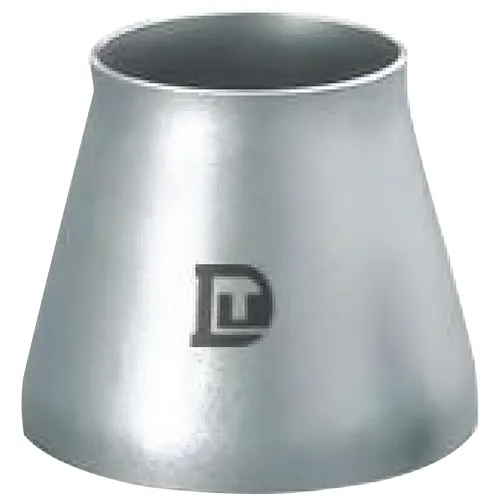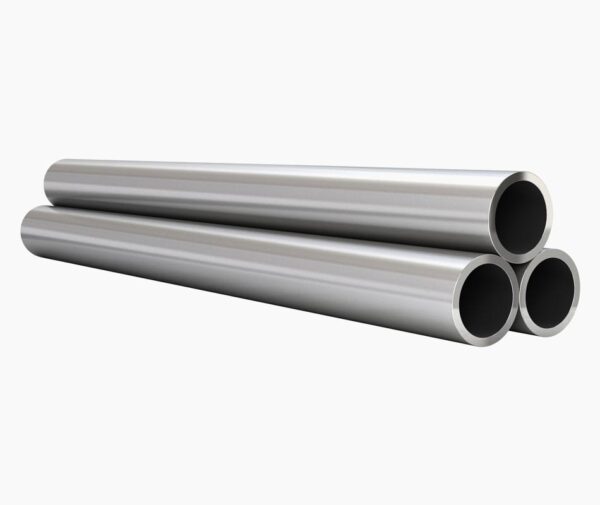Description
The alloy is often termed non- hardenable as it cannot be hardened by heat treatment due to lesser than required carbon content. Considering its low work hardening rate, it can be easily cold worked and machined. Since the alloy does not harden excessively during cold working, processes like bending, stretching, rolling, deep drawing and upsetting can be suitably done.
The alloy can certainly not be used at cryogenic temperatures, since it might cause a brittle fracture. The chemical composition has no molybdenum with negligible amount of nickel which reduces the cost of metal and fittingly compensating its properties. The alloy has limited application in welded form because even after the alloy being ferritic, the portion at the weld becomes martensitic in nature due to its carbon content. The welded metal needs to be heat treated to about 850°C, for it to be ductile enough for applications. The tensile strength of the alloy at room temperature is around 500 MPa, remains around 450 MPa at 300°C and eventually decreases after 400°C. The alloy might become a little brittle at room temperature after prolong heat treating and cooling, the same can be managed by annealing.
Chemical Properties
| Grade | C | Mn | Si | P | S | Cr | Ni | C | |
| SS 430 | Min | – | – | – | – | – | 16 | – | – |
| Max | 0.12 | 1.00 | 1.0 | 0.04 | 0.03 | 18 | 0.75 | – |
Physical Properties
| Density | 7.75 g/cm3 |
| Melting Point | 1425-1510°C |
| Thermal Conductivity @ 70°F | 23.9 W/m.K at 100°C |
| Electrical Resistivity | 0.060×10-6 Ω.m |
| Modulus of Elasticity | 200 GPa |
| Annealing | 815-870C° |
General Data
| Standard | SS 430 |
| UNS | S43000 |
| WERKSTOFF NR. | X8Cr17 |
| EN | 1.4016 |
| BS | 430S17 |
| SWEDISH | 2320 |
| JIS | SUS 430 |
| OR | – |
Standards Specifications
PIPES & TUBES
| Summary | Standards |
| Standard Specification for Forged or Rolled Alloy and Stainless Steel Pipe Flanges, Forged Fittings, and Valves and Parts for High-Temperature Service | ASTM A182 |
FITTINGS & FLANGES
| Summary | Standards |
| Standard Specification For Seamless Stainless Steel Mechanical Tubing | ASTM A511 |
| Standard Specification for Seamless and Welded Ferritic and Martensitic Stainless Steel Tubing for General Service | ASTM A268 |
Forms of Supply
Seamless tubes.
Corrosion Resistance
The grade is used in general applications, requiring suitable corrosion resistance. It can be used in environments containing mild organic and alkaline solutions, sulphur, nitric acid and food acids. Polishing and buffing on the alloy will improve its corrosion resistance. Resistance to pitting and crevice corrosion is comparatively lesser than chromium-nickel stainless steel alloys. Appreciable resistance to oxidation is provided. At room temperature, till 20% concentration of nitric acid, the corrosion rate of the grade is less than 100 mils/ year (milli-inches per year). In sulphuric acid, it is less than 1000 mils/ year.
Heat Treatment
The grade cannot be hardened by heat treatment. Annealing is performed to make the grade ductile. It is performed at about 750°C, and then appropriately air cooled, to avoid embrittlement. The annealed metal can be suitably cold worked.
Weldability
The heat affected zone during welding tends to become embrittled due to formation of martensite phase, and hence post weld ductility is affected of the weld zone. The metal is often pre-heated to about 180- 200°C to avoid the same. Post weld annealing becomes necessary for the metal to be used in dynamic applications, since in the weld condition, the fatigue properties of the metal are poor.
Machining
Due to the low work-hardening rate of the metal, it can be easily form, bend and drawn. Conventional machining processes can be suitably used. Intense cold working can be done, with intermediate sub critical annealing (annealing at comparatively lower temperature) The grade can be conveniently hot worked at about 1100°C, for suitable amount of time, since extended time can result in unwanted grain growth and reduction in ductility. Formability and drawing characteristics of the grade are appreciable.
Applications
Industrial roofing, wall cladding, equipment in mining and sugar industry, kitchen utensils, automotive trim, molding, gas burners, gutters, refrigerator cabinet panels, dishwashers, furnace combustion chambers, washing machine parts, nitric acid plant equipment, oil refinery equipment, element supports and fasteners.
Possible Grade and Alternatives
GRADE SS 434
| Grade | C | Mn | Si | P | S | Cr | Mo | Fe | |
| SS 434 | Min. | – | – | – | – | – | – | – | – |
| Max. | 0.12 | 1.00 | 1.00 | 0.040 | 0.030 | 16 | 1 | 81 |
GRADE SS 304
| Grade | C | Mn | Si | P | S | Cr | Ni | |
| SS 304 | Min. | – | – | – | – | – | 18 | 8.0 |
| Max. | 0.08 | 2.0 | 1.0 | 0.045 | 0.03 | 20 | 11.0 |
GRADE SS 316
| Grade | C | Mn | Si | P | S | Cr | Ni | Fe | Mo | |
| SS 316 | Min. | – | – | – | – | – | 16 | 11.00 | 67.845 | 2.00 |
| Max. | 0.08 | 2.00 | 1.00 | 0.045 | 0.030 | 18 | 14.00 | – | 3.00 |


